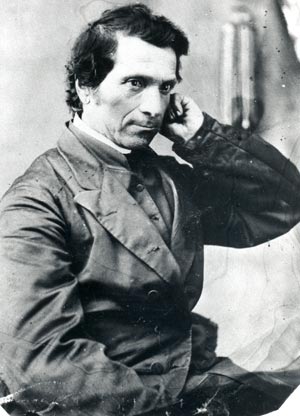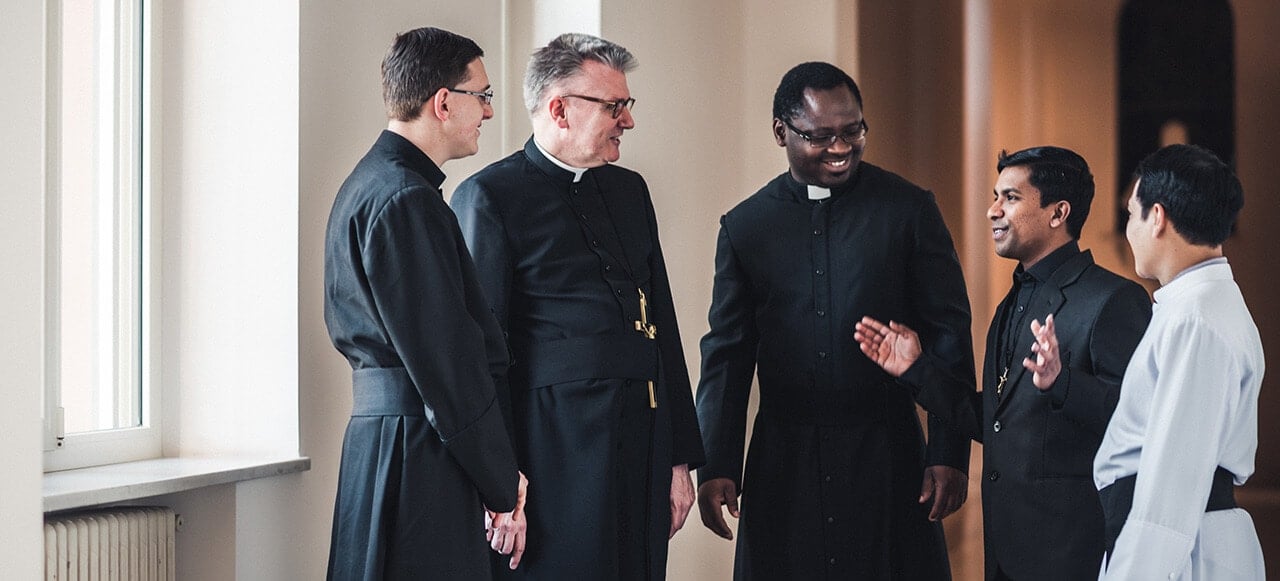Among the great Oblate Missionaries who evangelized the Amerindians along the Pacific coast of Oregon, it is only right to include Eugene-Casimir Chirouse. Born in France in 1821, he was part of the first group of Oblates to arrive in this area in 1847. He was not yet a priest. He was ordained in a ceremony marked with extreme simplicity. The celebration took place in the one-room dwelling in Walla Walla that served as Bishop Magloire Strainer’s chapel, dining room and bedroom. There were only two witnesses, Fr. Pascal Ricard and Bro. Felix Pandosy. They were lacking in everything, even an alb for Bro. Chirouse. Without shame and to save the principle of a rather narrow view of liturgy typical of the time, the ordinand felt obliged to slip on a nightshirt over his cassock! The ordination was none the less valid.

During his forty-five year long missionary career, Fr. Chirouse founded several missions among the Cayuse and the Snohomish. He is the author of a grammar, a dictionary and a catechism in the Snohomish language. A highly skilled schoolmaster, he was accredited as an “Amerindian agent” by the American government. He was called “The good old Father”. His ingenuity was unceasingly in search of a new invention. He could transform a tinplate box into an elegant censer as well as make a cassock out of an ordinary blanket that he succeeded in dyeing with wild blackberry juice.
Here is an incredible adventure of this bold inventor concerning a cassock. Travel around the Puget Strait in Oregon was generally done by boat. One day, Fr. Chirouse undertook a long trip to meet his superior, Bishop Strainer. Wishing to present himself in suitable attire for such an important meeting, he chose his best cassock that he had made from a white blanket and dyed a most beautiful black, thanks to the best blackberries he could find. He left the mission in the company of three Amerindian oarsmen. Shortly after their departure, the crew was caught up in a furious sea. The rowers fought as best they could against the roaring waves. Useless! The boat capsized and its occupants were thrown into the water. With much effort they succeeded in up righting the boat. All got back on board safe and sound. Alas! The salt water had damaged the priest’s beautiful cassock. It was no longer the traditional black of an ordinary priest’s cassock. It resembled rather the violet cassock of a bishop!
Father was dismayed. How could he, a poor missionary, appear before his bishop, wearing clothing similar to his? Wouldn’t this be presumptuous? While thinking about this annoying situation, the boat capsized again and once more the cassock of the “good old Father” was damaged by the salt water. When he got back into the boat, all the traces of dyeing had disappeared. The robe was back to its original whiteness! What astonishment! Imagine… to find himself clothed in white, a prerogative reserved for the Sovereign pontiff! Would his troubles never end!
That evening, the travelers camped on the river bank and spent a good night. When he awoke Fr. Chirouse saw close by a clump of beautiful wild blackberries.
He had never seen such an abundance of these precious fruits, so large, so juicy, and so black. Definitely the Lord was with him. He could now again give his cassock the required color and present himself before his superior without any apprehension. Wasn’t he clothed in a black cassock freshly soaked in wild blackberry juice?
André DORVAL, OMI
